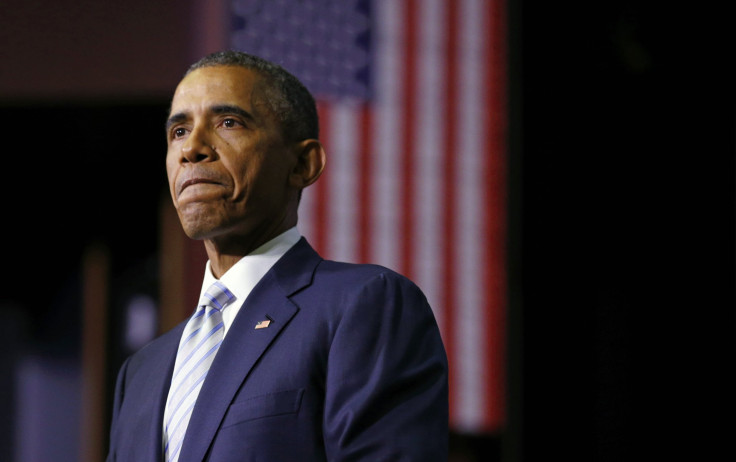Obama Budget For Free Community College To Cost $1.4 Billion In 2016, $60 Billion Over Next Decade

President Barack Obama's costless community college initiative is anything but free -- for the federal government, that is. In his roughly $4 trillion 2016 budget proposal presented Monday to Congress, Obama laid out the details of America's College Promise. In 2016 alone, the plan, if passed, would have a price tag of $1.365 billion.
The president's controversial educational effort aims to give two tuition-free years of community college to "everybody who is willing to work for it." Obama has said the federal government would cover about 75 percent of tuition, with states picking up the rest. According to the budget, partnering with states to implement America's College Promise would incrementally increase the deficit by $60 billion over the next 10 years.
In 2017, the program would cost $1 billion; in 2018, $2 billion. The price jumps in 2021 to $6 billion, then to $9 billion in 2023, before topping out at $13 billion in 2025. In exchange, states must "agree to waive tuition and fees at community colleges for eligible students, increase their own investment by matching the federal funds and undertake a set of reforms to improve the quality of community colleges," the budget reads.
The cost of the Obama proposal already has drawn criticism from Republican politicians. House Speaker John Boehner, R-Ohio, even published a blog post laden with Taylor Swift GIFs to express his concern. "Sixty billion dollars is a lot of money ... you can't just shake it off," staffers wrote, referencing Swift lyrics. "And the president knows full well there's no blank space in the taxpayers' checkbook."
Others have expressed doubt that the GOP-controlled Congress would ever pass the proposal, which Obama has said could benefit up to 9 million "responsible" students. To be eligible for free tuition, students would have to enroll at least half time, earn a minimum 2.5 GPA and make progress toward completing their degree programs. The goal is to produce qualified job candidates.
"Today, more than ever, Americans need more knowledge and skills to meet the demands of a growing global economy," the budget reads. "A college education opens the door to opportunity — for individuals and, in turn, for the nation as a whole." The budget also designated $200 million for a postsecondary American Technical Training Fund within the Career and Technical Education program to make and expand job-training programs, among other higher education initiatives.
© Copyright IBTimes 2024. All rights reserved.





















